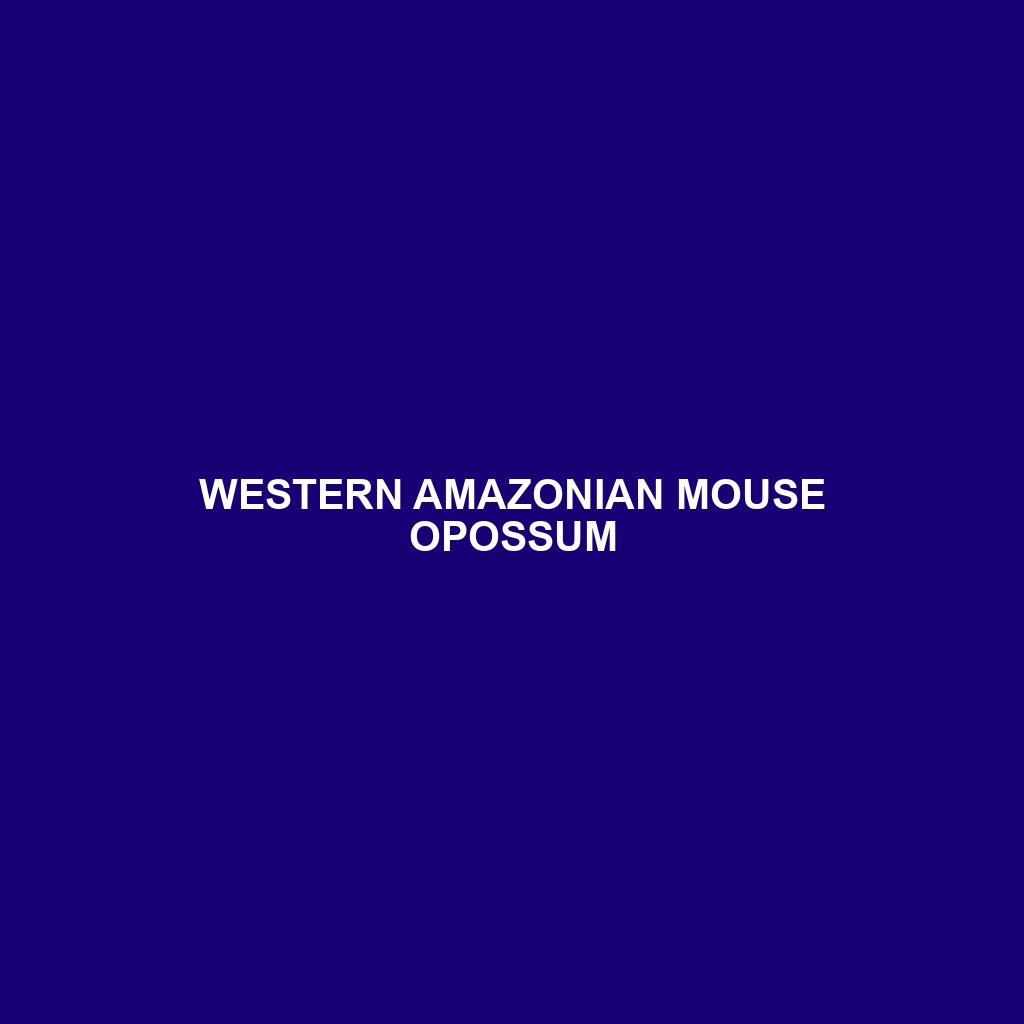Western Amazonian Mouse Opossum (Marmosa lepida) Description
The Western Amazonian Mouse Opossum, scientifically known as Marmosa lepida, is a small, nocturnal marsupial native to the dense rainforests of the western Amazon basin. Known for its agility and arboreal lifestyle, this elusive creature plays a crucial role in maintaining the ecological balance of its habitat. Despite their diminutive size, these opossums are fascinating due to their unique adaptations and behaviors.
Physical Characteristics
Size: The Western Amazonian Mouse Opossum is a small mammal, with an overall body length ranging from 10 to 15 cm (4 to 6 inches) and a prehensile tail that can measure up to 16 cm (6.3 inches).
Weight: They generally weigh between 20 to 50 grams (0.7 to 1.8 ounces).
Coloration: Their fur is soft and dense, predominantly a reddish-brown or greyish-brown on the dorsal side, while the ventral side is typically a lighter, creamy color.
Special Features: They have large, black eyes adapted for nocturnal vision, and their ears are relatively large and rounded, aiding in acute hearing. The tail is prehensile, aiding in climbing and balancing among tree branches.
Behaviors
Social Interactions: These opossums are generally solitary, coming together only during the breeding season. They are known to be territorial, marking their areas with scent glands.
Feeding Habits: They are omnivorous, with a diet consisting of insects, small vertebrates, fruits, and nectar. Their foraging activities play a role in seed dispersal and pest control.
Ecological Roles: As both prey and predator, they are integral to the food web. Their consumption of insects helps control pest populations, while they themselves are a food source for larger predators.
Habitats
Geographic Range: The Western Amazonian Mouse Opossum is found in the lowland rainforests of the western Amazon basin, including parts of Brazil, Peru, and Bolivia.
Environment: They thrive in dense, humid forests with abundant tree cover. They are arboreal, spending most of their time in trees and rarely descending to the ground.
Shelter: These opossums often create nests in tree hollows, leaf litter, or abandoned bird nests.
Adaptations
Arboreal Adaptations: Their prehensile tail and sharp claws are perfectly adapted for an arboreal lifestyle, allowing them to navigate the forest canopy with ease.
Nocturnal Lifestyle: Large eyes and acute hearing aid in night-time activity, helping them avoid predators and locate food in the dark.
Camouflage: Their fur coloration helps them blend into the forest environment, providing some protection against predators.
Conservation Status
Current Status: The Western Amazonian Mouse Opossum is currently listed as Least Concern by the IUCN Red List. However, their populations are affected by habitat destruction due to deforestation and human encroachment.
Conservation Efforts: Conservation efforts focus on habitat preservation and mitigating deforestation to ensure the sustainability of their populations.
Fun Facts
Marsupial Pouch: Unlike many marsupials, female Western Amazonian Mouse Opossums do not have a well-developed pouch. Instead, they carry their young clinging to their teats.
Nectar Drinkers: In addition to insects and fruits, they have a penchant for nectar, playing a role in pollination.
Agile Climbers: Despite their small size, they are remarkably agile climbers, capable of leaping between branches with ease.
The Western Amazonian Mouse Opossum is a testament to the incredible biodiversity of the Amazon rainforest. Its unique adaptations and ecological roles make it an essential species in its habitat. By understanding and protecting this small yet significant marsupial, we contribute to the broader efforts of conserving the rich biodiversity of the Amazon.
